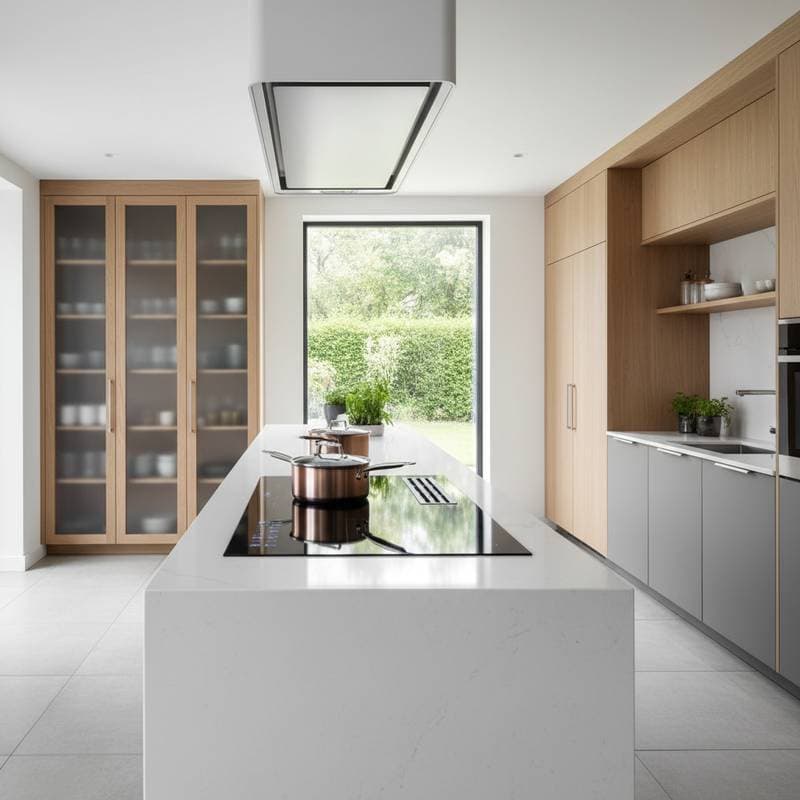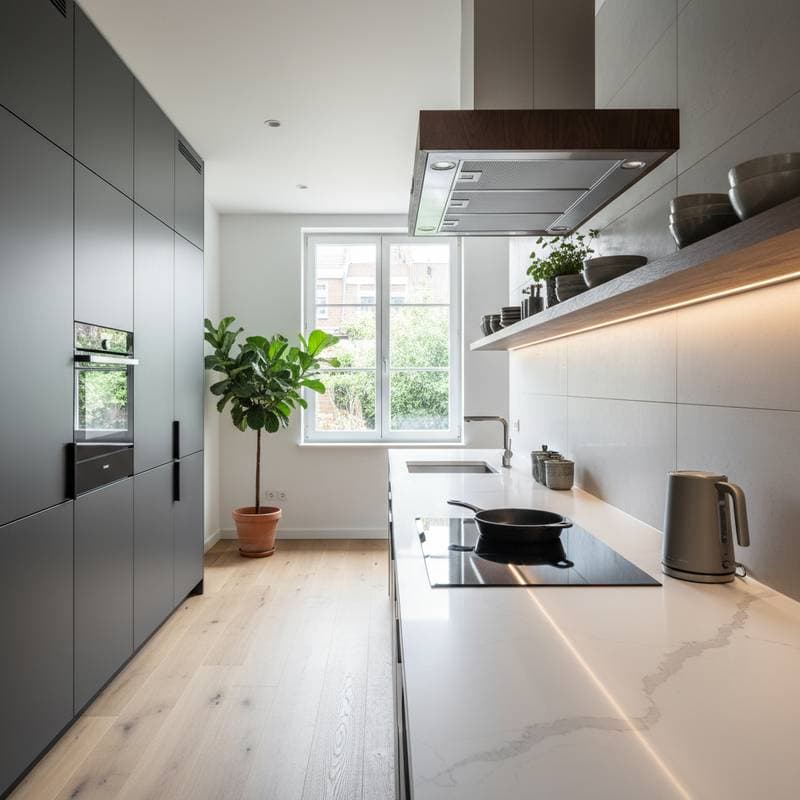The Shift from Gas Stoves: Understanding Induction's Rise
Professionals in the field have installed countless kitchen appliances, ranging from premium gas ranges in upscale renovations to standard electric units in modest homes. Homeowners encounter a spectrum of preferences and pitfalls. Currently, a significant transformation unfolds in kitchens nationwide: the decline of gas stoves in favor of induction technology.
This evolution stems from health studies, updated building regulations, and demands for greater energy efficiency. Local policies, safety considerations, and environmental guidelines accelerate the process. Homeowners often wonder if adopting induction proves worthwhile. Professionals advise that success hinges on thorough preparation and selecting qualified installers.
Defining Induction Cooking Technology
Induction cooking differs fundamentally from conventional electric methods. It employs electromagnetic fields to generate heat directly within compatible cookware, bypassing the need to warm the cooking surface first. This direct heating approach revolutionizes stove performance.
Key practical distinctions include:
- Rapid Heating: Induction surpasses gas and traditional electric in speed. For instance, water reaches a boil in approximately half the usual time.
- Precise Temperature Control: Adjustments occur immediately, providing exact regulation for delicate tasks.
- Superior Energy Use: Nearly 100 percent of the energy targets the cookware, minimizing heat loss to the surrounding environment and maintaining a cooler kitchen.
- Enhanced Safety Features: The surface remains cool to the touch outside the cookware area, significantly lowering the risk of burns.
- Effortless Maintenance: Absent open flames and equipped with smooth glass tops, induction units allow spills to be wiped clean with minimal effort.
Homeowners typically adapt quickly once they acquire suitable pots and pans. The primary learning curve involves appreciating the technology's responsive nature and its near-silent operation.
Everyday Advantages of Induction in Action
Individuals who transition thoughtfully experience concrete enhancements that extend well beyond basic efficiency.
- Improved Indoor Air Quality: Without combustion byproducts, homes avoid harmful emissions. Residents observe reduced cooking smells and diminished buildup on nearby surfaces.
- Reduced Air Conditioning Expenses: Cooler kitchen temperatures prove beneficial in regions with high cooling demands, easing the load on HVAC systems.
- Minimized Fire Hazards: The absence of flames decreases the potential for accidental ignition of nearby materials like towels or spilled oils.
- Reliable Cooking Outcomes: Stable temperature management ensures repeatable results, a feature valued by both amateur cooks and culinary experts.
- Contemporary Aesthetic Appeal: Sleek, unobtrusive designs align with prevailing kitchen styles, while simplified cleaning routines save time.
Installations in diverse settings, from luxury to standard kitchens, consistently yield positive feedback when motivated by functionality rather than aesthetics alone. Preparation and aligned expectations form the foundation of satisfaction.
Insights from Contractors on Induction Installations
From the installer's viewpoint, induction projects proceed more straightforwardly after addressing electrical requirements. Unlike gas setups, no gas line testing or flame adjustments prove necessary. However, precision matters greatly, as electrical standards demand careful attention to circuit capacity and breaker specifications.
When discussing durability, professionals emphasize the reliance on sensitive electronics and sensors. Reputable brands offer robust construction, yet vulnerability to electrical spikes or humidity persists. Essential safeguards include dedicated surge protection and solid grounding. In areas prone to power inconsistencies, recommend an electrician evaluate and potentially add a comprehensive surge protection system prior to installation.
Maintenance for induction differs markedly from gas appliances. Basic tools suffice for many gas repairs, whereas induction diagnostics require specialized equipment. Before selecting a model, verify regional service options. Even high-end units lose value without accessible warranty support from local technicians.
Preparing Your Kitchen for an Induction Upgrade
In regions enforcing bans on new gas hookups, proactive planning avoids future disruptions. Delaying until a stove breakdown may complicate compliance with codes or extend permitting timelines. Begin by assessing your current setup to gauge compatibility.
Start with an electrical audit: Most homes need a dedicated 240-volt circuit capable of handling 40-50 amps, depending on the unit's power rating. Older wiring might require panel upgrades, costing between $1,000 and $3,000 based on home age and location. Consult a licensed electrician early to identify needs and obtain quotes.
Next, evaluate cookware: Only ferromagnetic materials like cast iron or stainless steel work effectively. Test existing pieces with a magnet; if it adheres, the item suits induction. Budget $200 to $500 for new sets if replacements prove necessary.
Consider ventilation: While induction produces less heat, range hoods remain vital for steam and odors. Ensure your system meets current airflow standards, typically 100-400 cubic feet per minute.
Finally, factor in costs: Expect $1,500 to $4,000 for the cooktop itself, plus installation fees of $500 to $1,500. Rebates from utility programs or incentives for efficient appliances can offset expenses; check local availability.
Achieving a Seamless Induction Transition
Embracing induction unlocks a safer, more efficient cooking environment tailored to contemporary living. Contractors observe that informed homeowners navigate the process with confidence, reaping long-term rewards in performance and comfort. Take the initial steps today to position your kitchen for this inevitable advancement.









